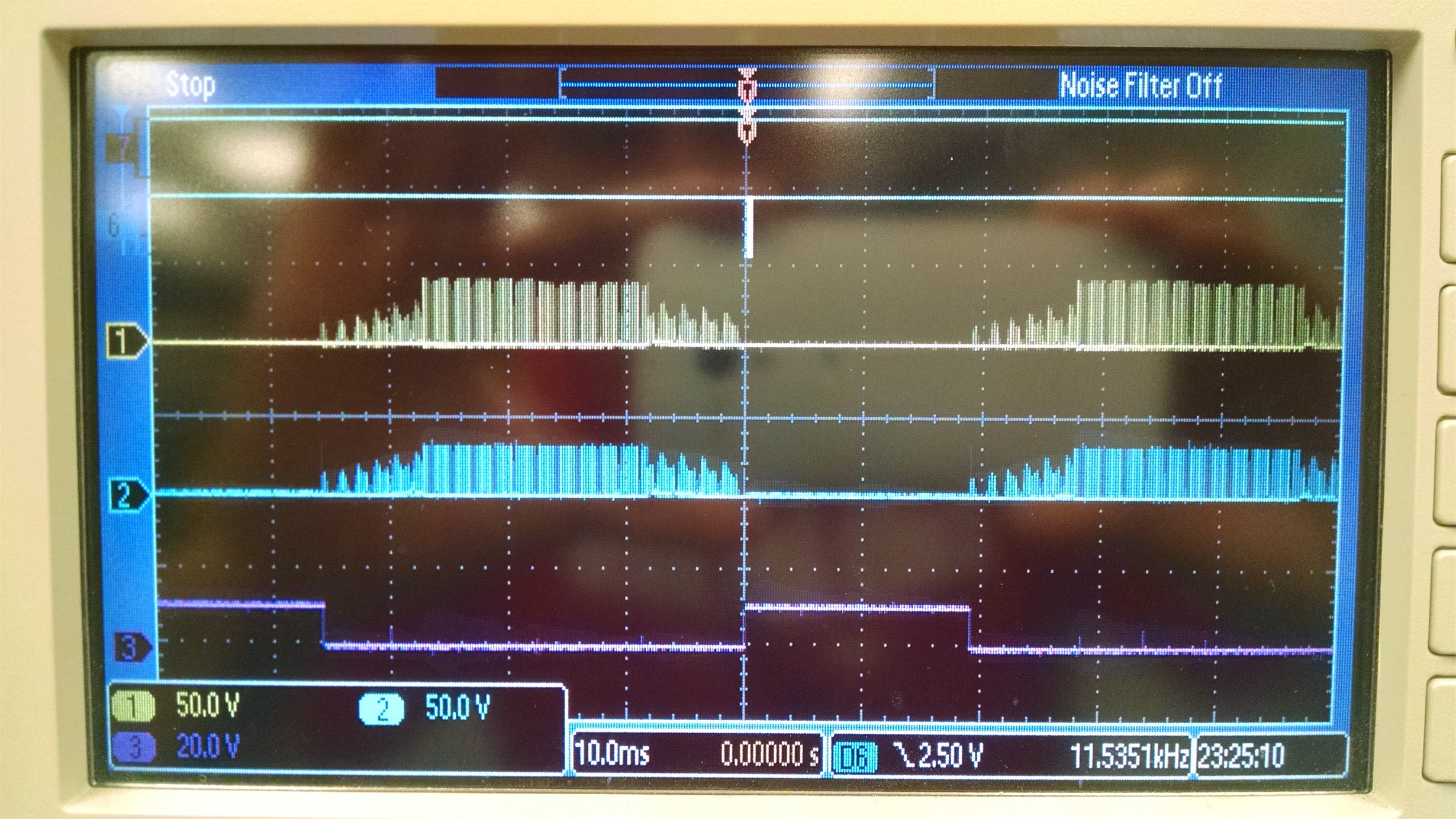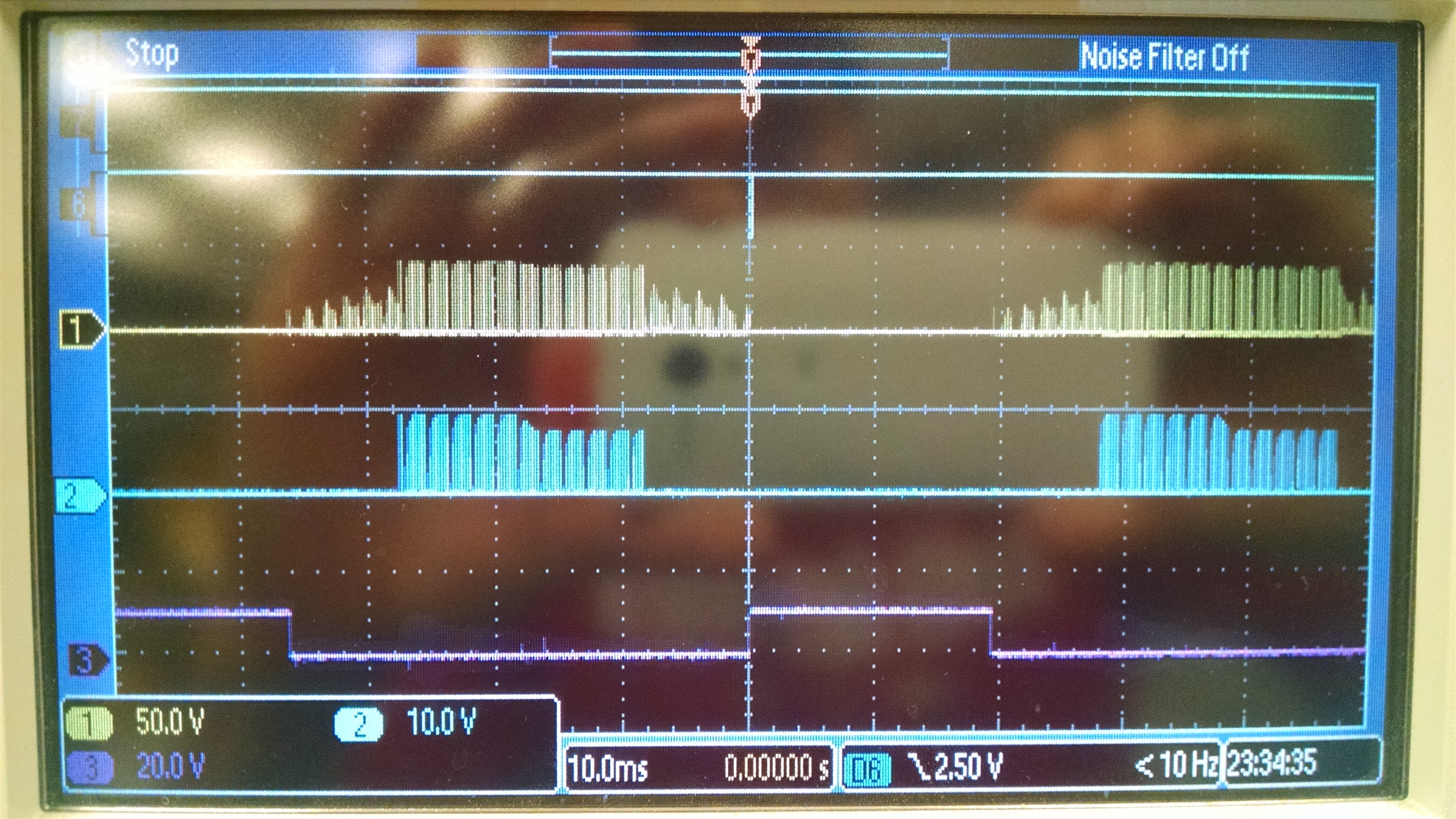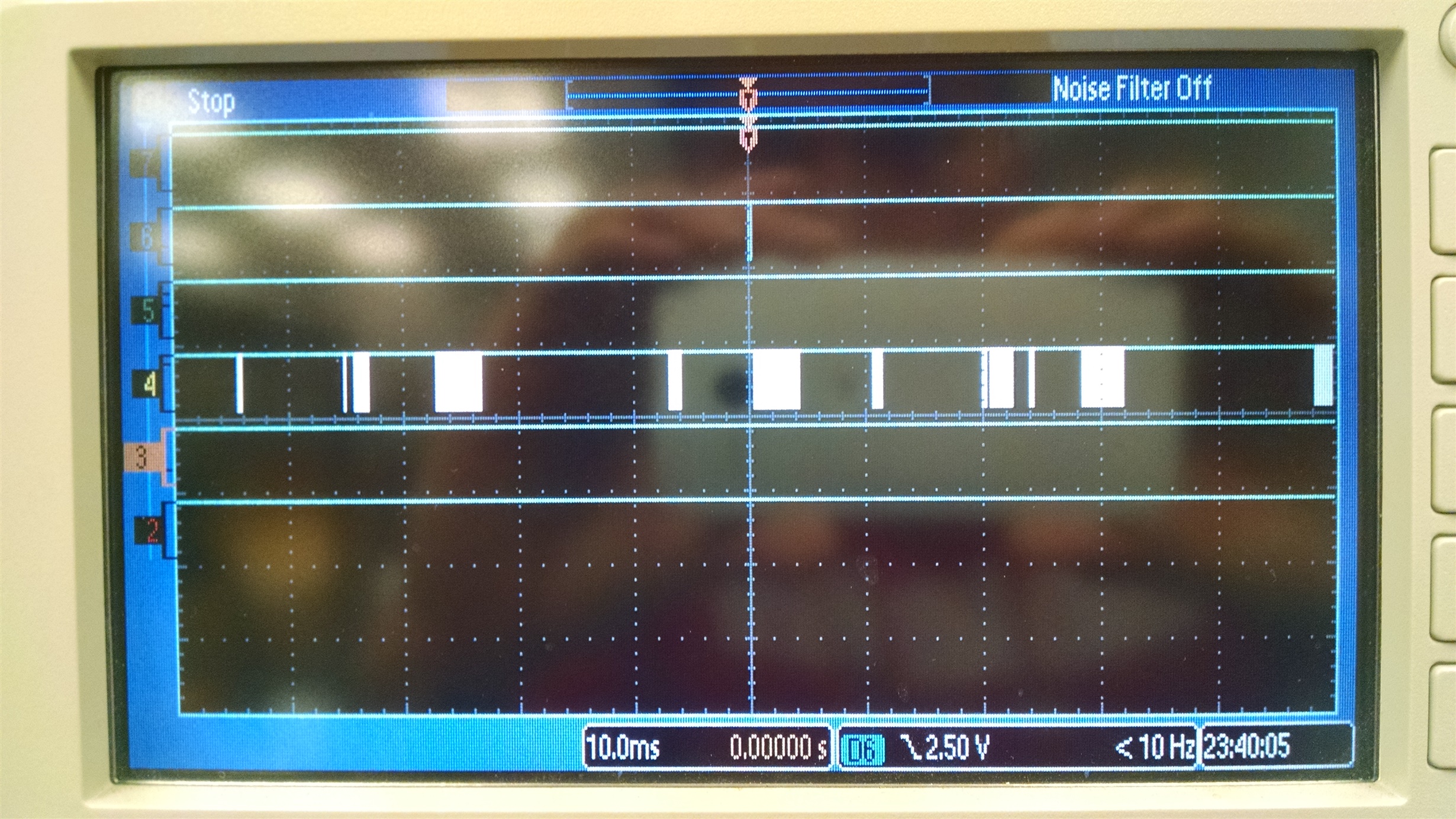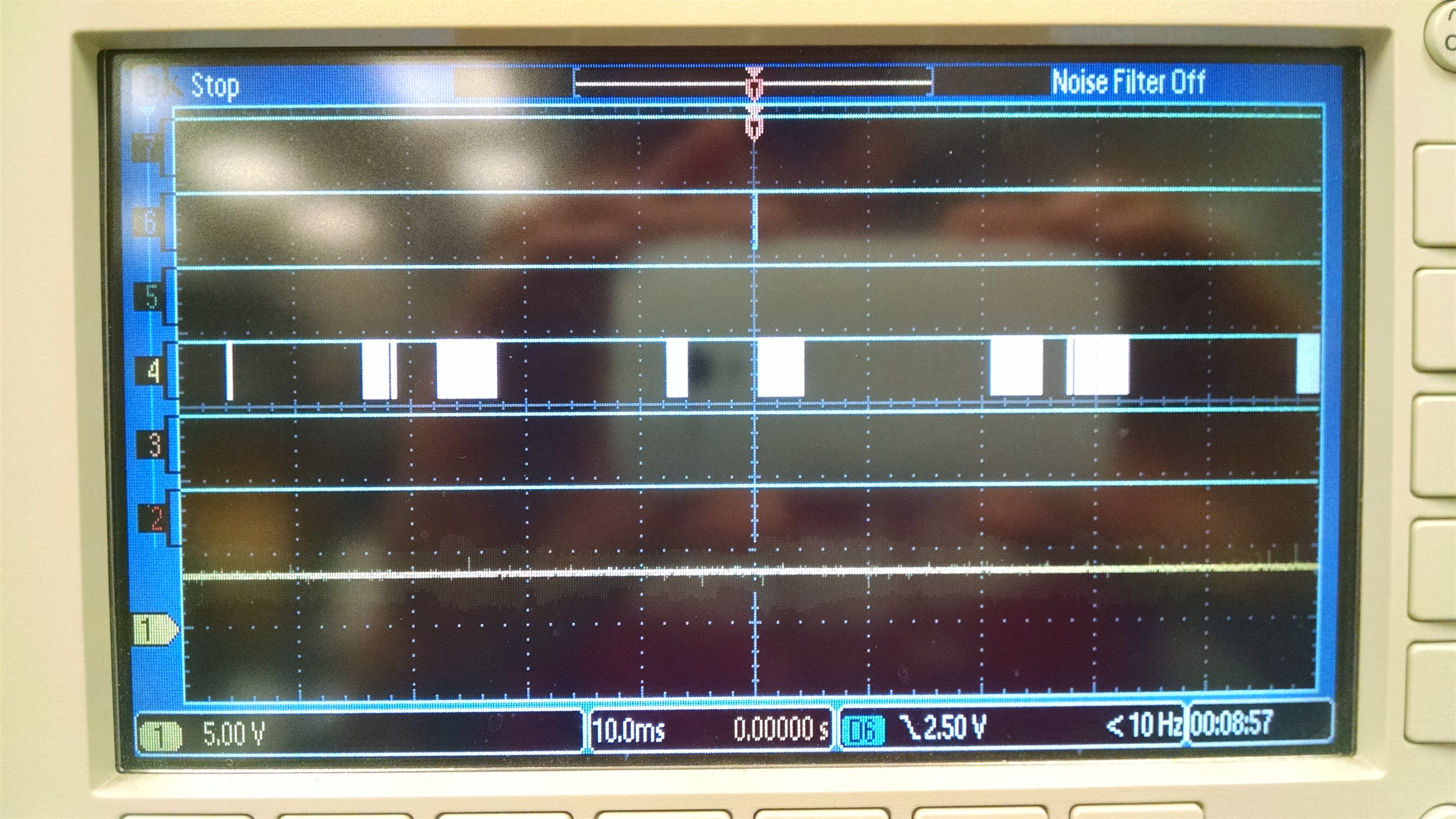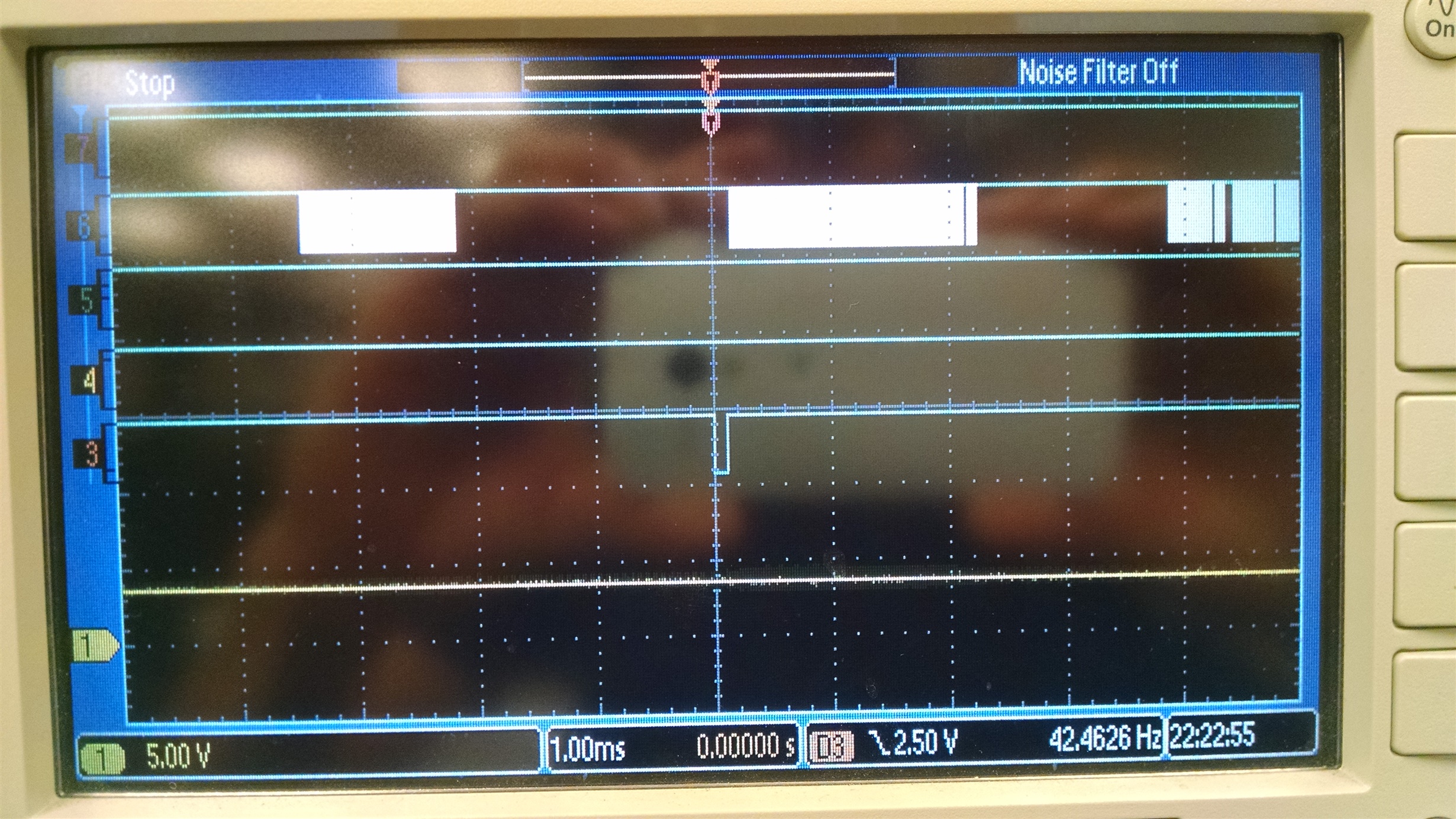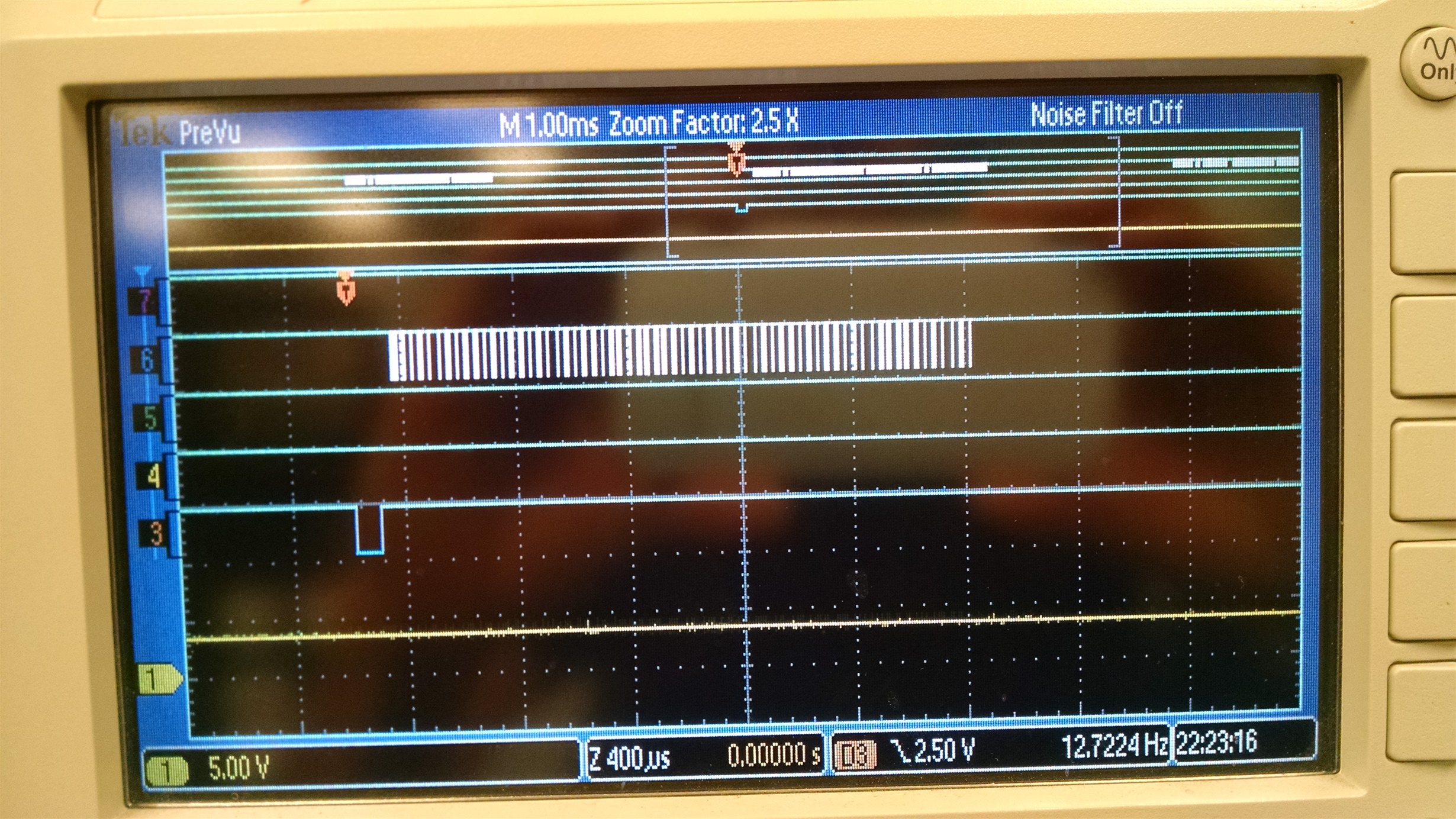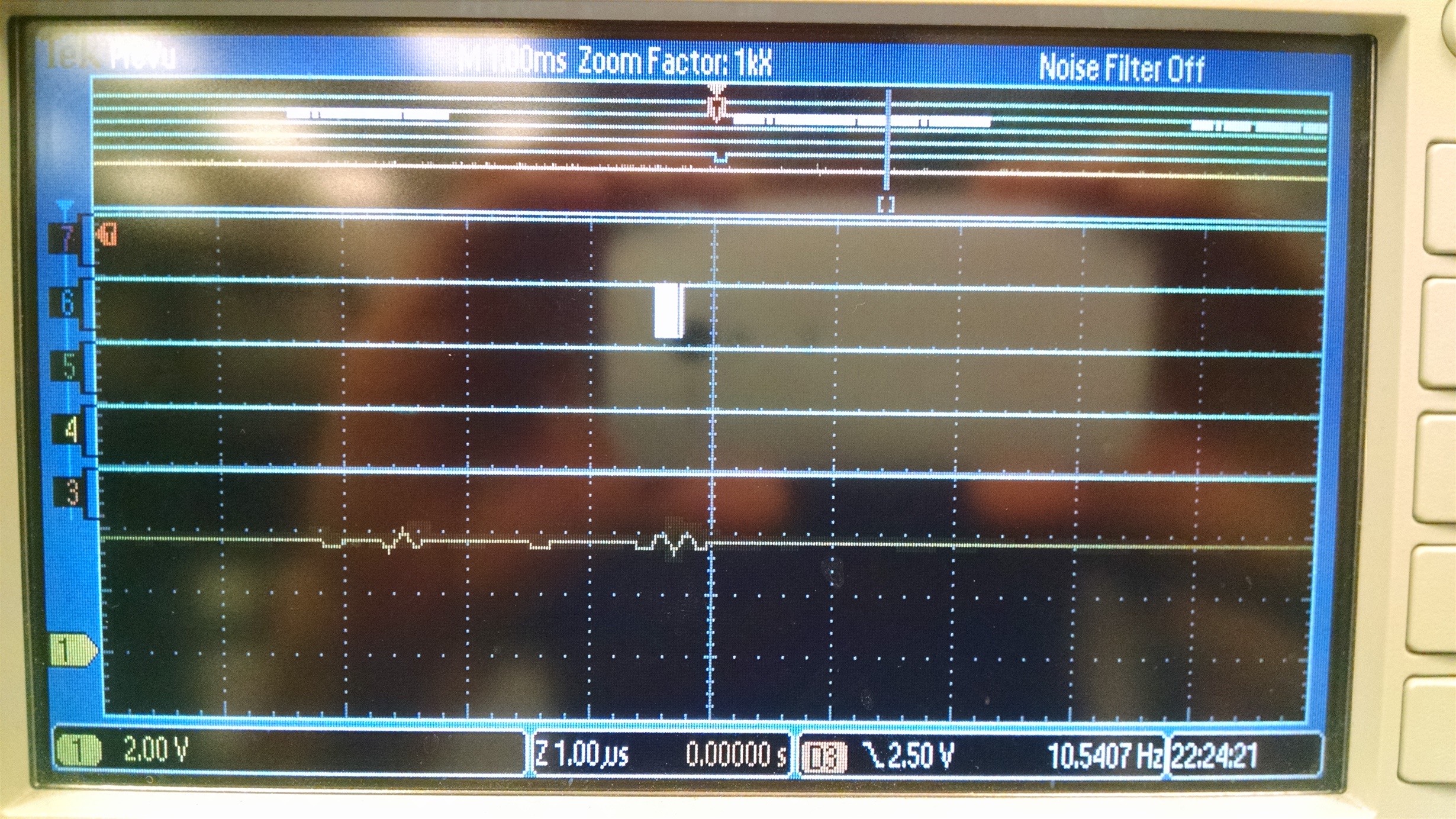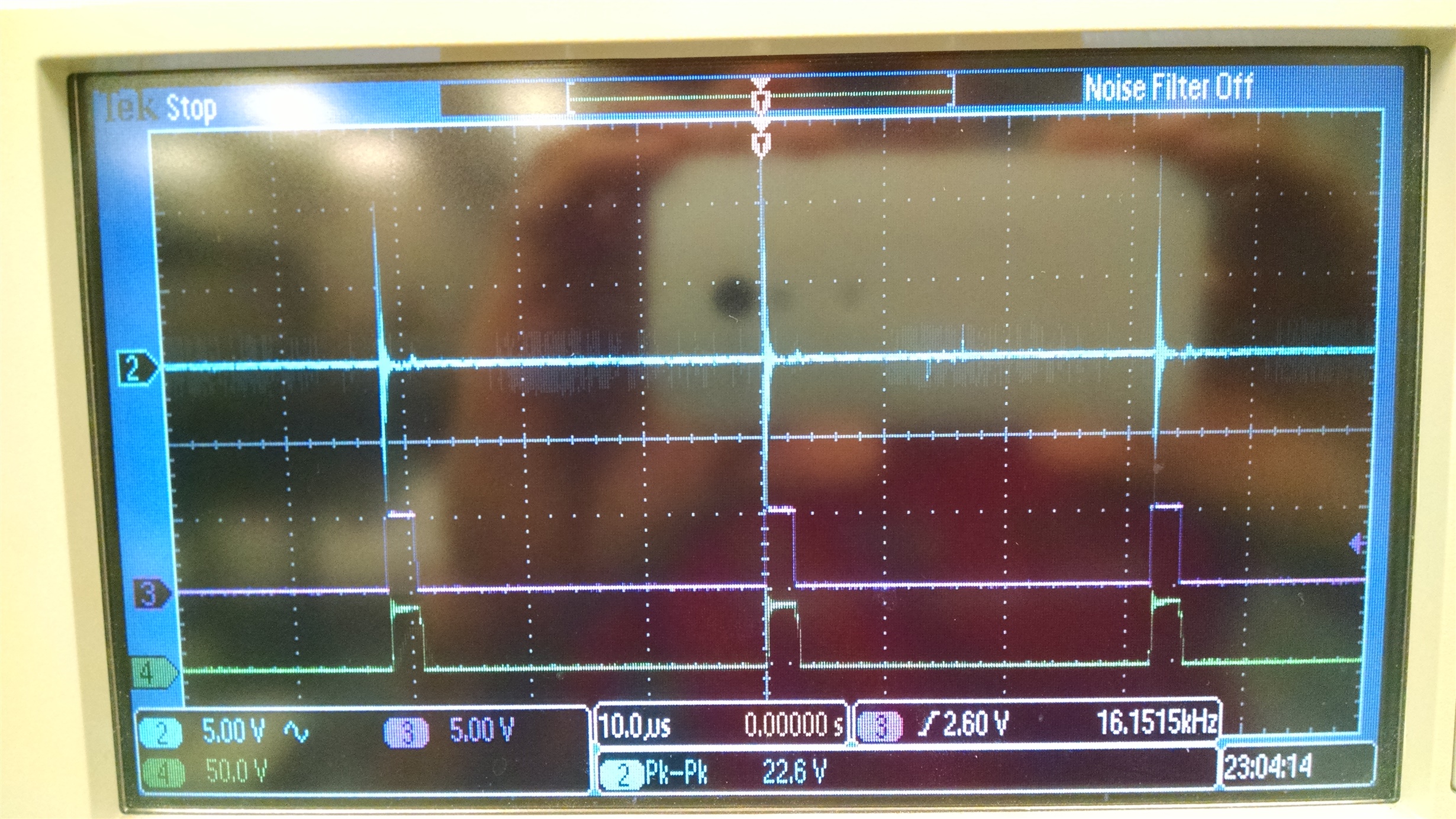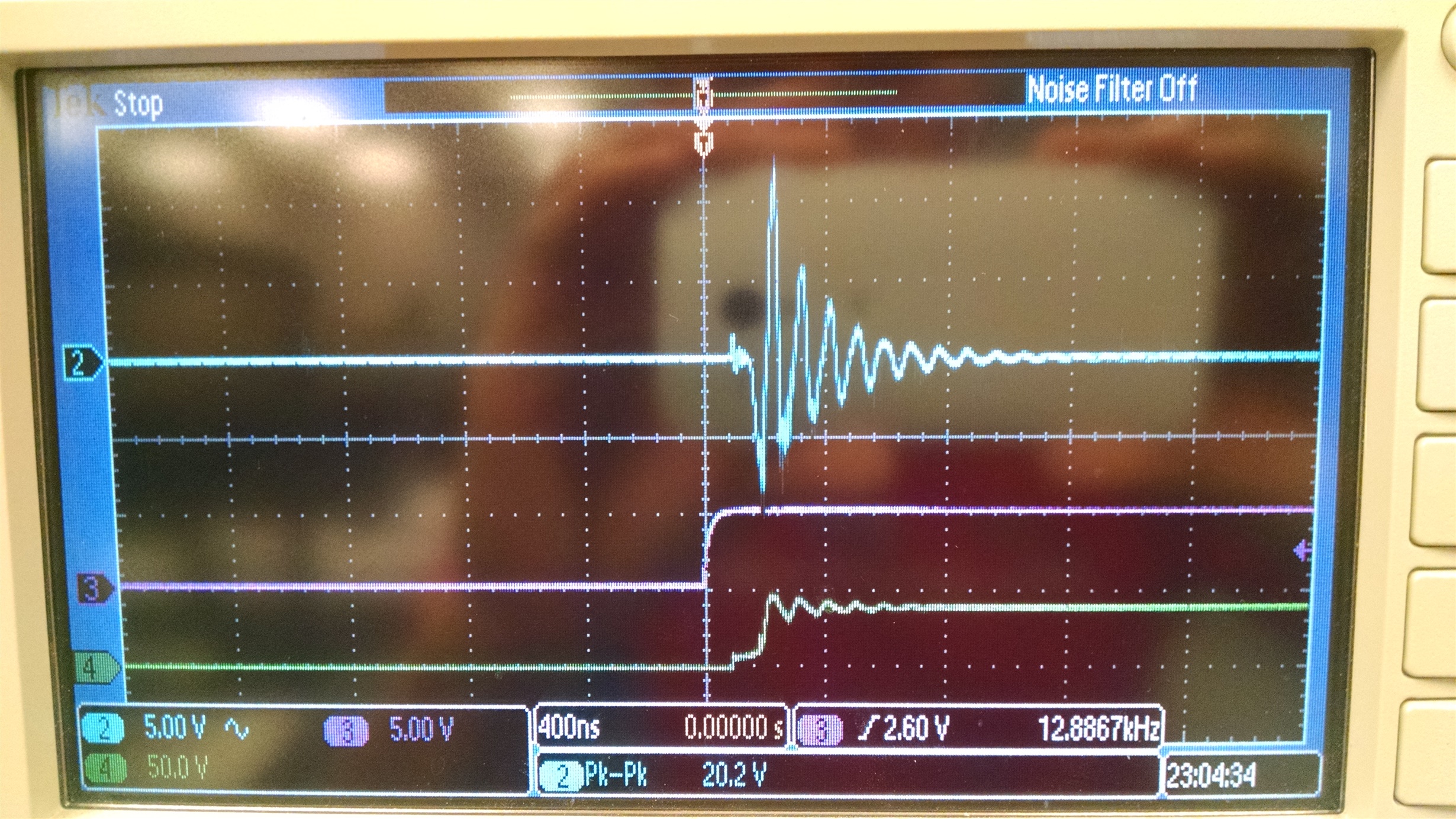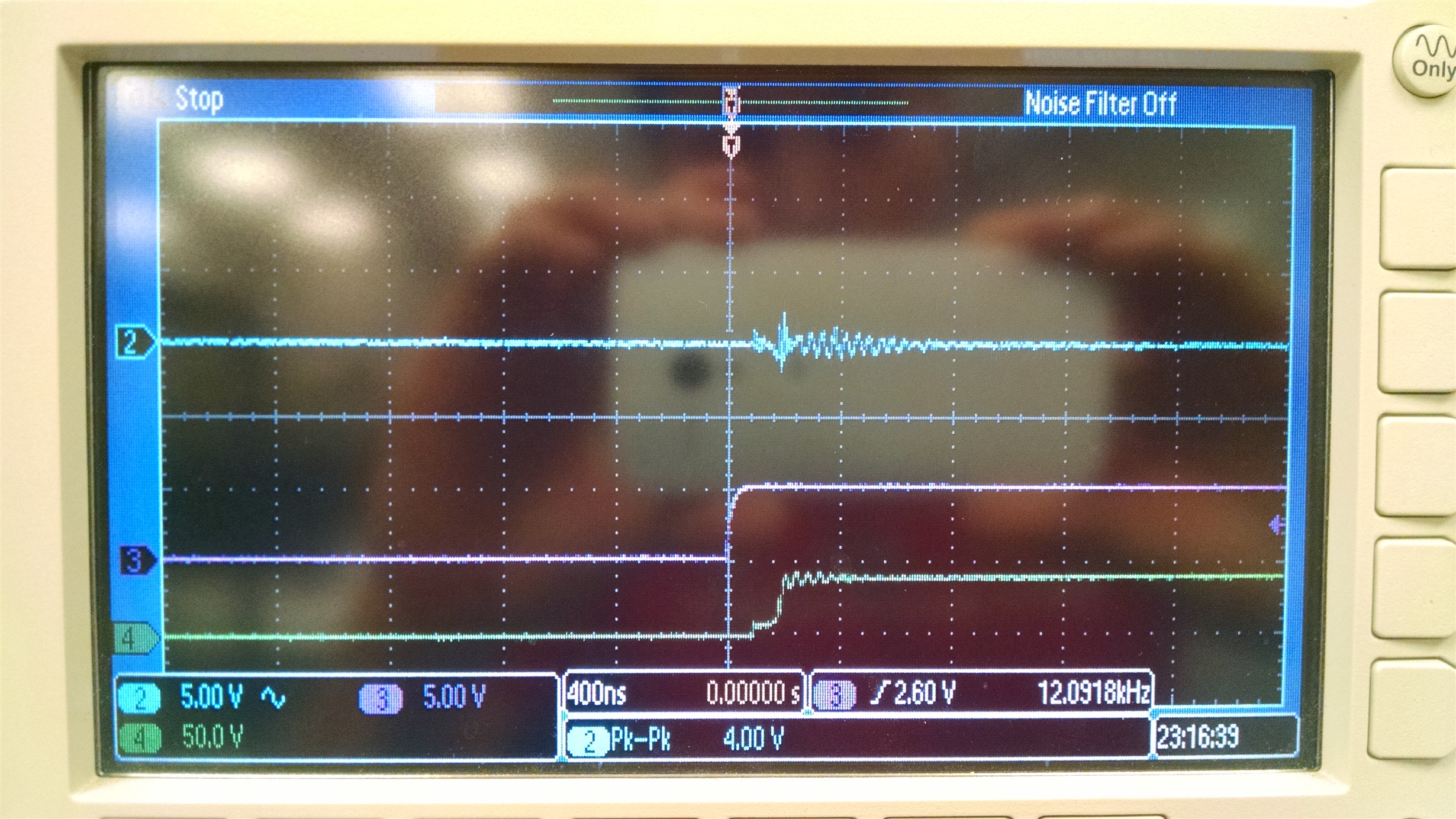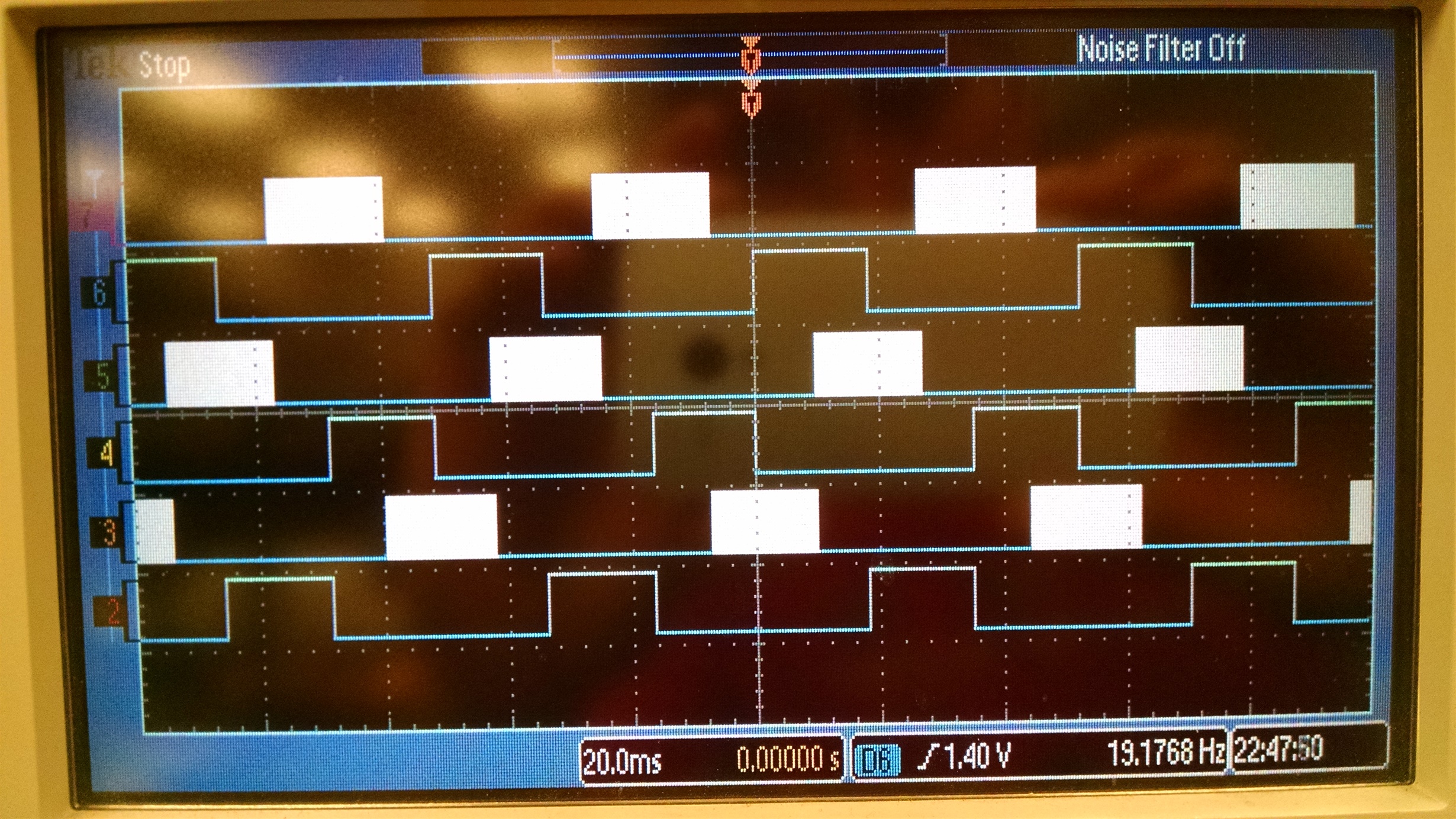I'm using a DRV8303 to turn on 6 IRFB3077PBF transistors that control a sensored BLDC motor. Everything is wired up on a breadboard with the DRV8303 mounted on its own breakout board. When I run the motor, I noticed that it ran "glitchy." I'm powering the circuit using a lab power supply with PVDD = 30V (measured 30.05V) and VDD_SPI = 5V (measured 5.038V). Using an oscilloscope to look at the signals for each phase, I found that the gate output of the driver does not match the gate input from the MCU. From page 7 of the datasheet, Vgx_norm should be 11.5 V max. When I saw the oscilloscope images, I found that the gate output was reaching ~40V on the high side mosfets which seems fine (PVDD = 30V + Vgx_norm). Additionally, I saw that the transistor turns on prior to and after the signals from the MCU. Figure 1 shows the input vs output gate signals for phase A and Figure 2 is a zoomed in version of the same image. Figure 3 is phase B and Figure 4 is phase C.
Channel 6 = nFault pin on DRV8303
Channel 5 = GHx_in (from MCU)
Channel 4 = GLx_in (from MCU)
Channel 1 = GHx_out (from DRV8303)
Channel 2 = GLx_out (from DRV8303)
Figure 1 - Gate signals: Input vs Output Phase A
Figure 2 - Gate signals: Input vs Output Phase A (Zoomed in)
In this image, the high side transistor comes on when the low side transistor is already on and the driver trips the fault shutting down the low side mosfet. (Is this normal?) I used the same base code on a similar circuit with no problems, the only difference in the circuit being the DRV8303 IC instead of 3 IR2110 ICs. In the program, I simply added the SPI portion which just sets Control Register 1 to 17F4h and Control Register 2 to 1800h. I've tried changing different registers with no fix.
Figure 3 - Gate signals: Input vs Output Phase B
Figure 4 - Gate signals: Input vs Output Phase C
Driver voltages (as measured with DMM):
PVDD = 30.05V
VDD_SPI = 5.038V
GVDD = 10.16V-10.19V, fluctuates as motor rotates
DVDD = 3.342V-3.344V, fluctuates as motor rotates
AVDD = 6.582V
EN_GATE = 5.038V
The schematic for the circuit is as follows.
I apologize for the quality of the oscilloscope images, but all I have on me right now is my phone. I can also provide the code for the MCU (Arduino Nano). Any help would be appreciated.
Best regards






